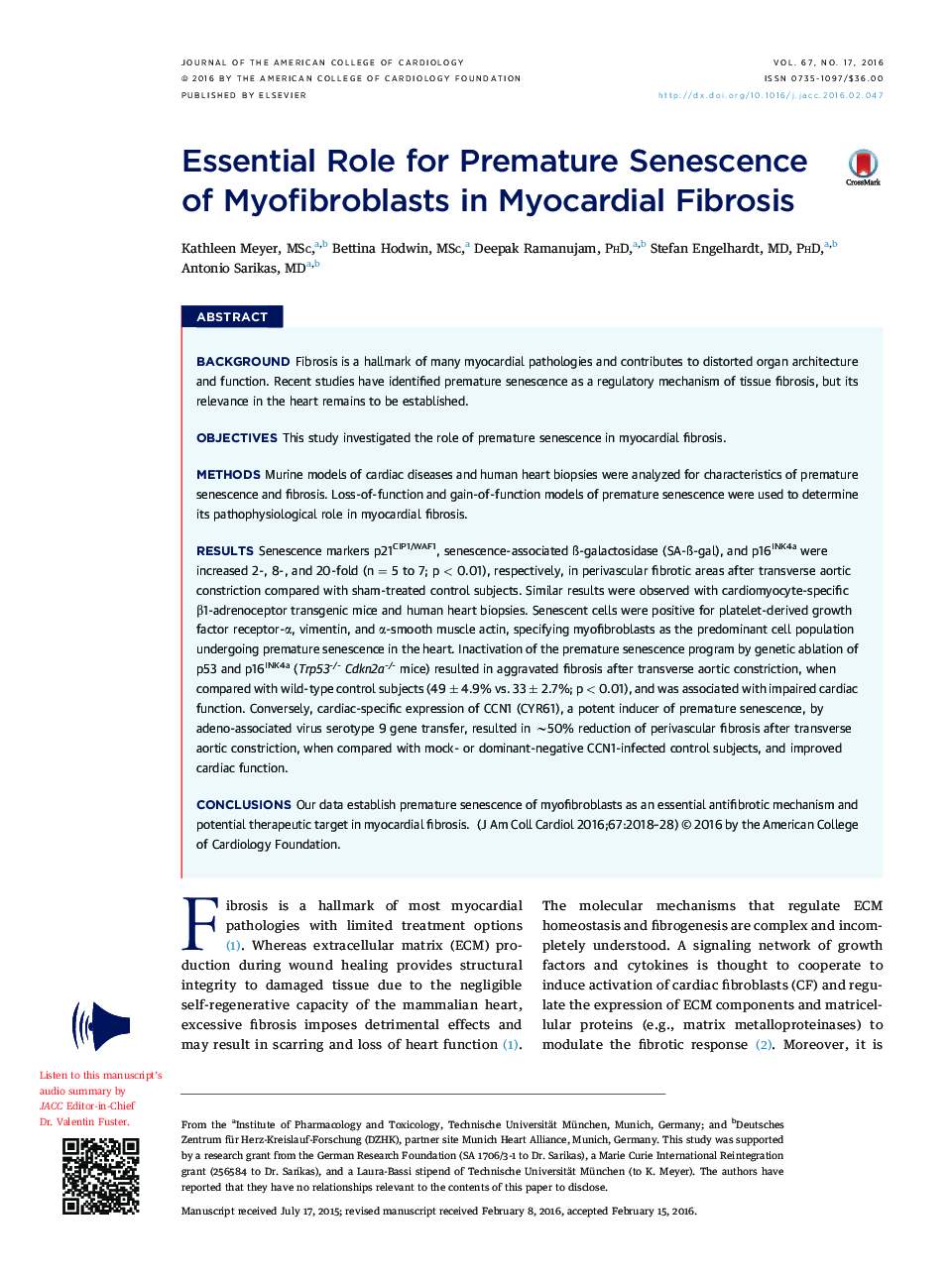| کد مقاله | کد نشریه | سال انتشار | مقاله انگلیسی | نسخه تمام متن |
|---|---|---|---|---|
| 5981755 | 1576995 | 2018 | 11 صفحه PDF | دانلود رایگان |

BackgroundFibrosis is a hallmark of many myocardial pathologies and contributes to distorted organ architecture and function. Recent studies have identified premature senescence as a regulatory mechanism of tissue fibrosis, but its relevance in the heart remains to be established.ObjectivesThis study investigated the role of premature senescence in myocardial fibrosis.MethodsMurine models of cardiac diseases and human heart biopsies were analyzed for characteristics of premature senescence and fibrosis. Loss-of-function and gain-of-function models of premature senescence were used to determine its pathophysiological role in myocardial fibrosis.ResultsSenescence markers p21CIP1/WAF1, senescence-associated Ã-galactosidase (SA-Ã-gal), and p16INK4a were increased 2-, 8-, and 20-fold (n = 5 to 7; p < 0.01), respectively, in perivascular fibrotic areas after transverse aortic constriction compared with sham-treated control subjects. Similar results were observed with cardiomyocyte-specific β1-adrenoceptor transgenic mice and human heart biopsies. Senescent cells were positive for platelet-derived growth factor receptor-α, vimentin, and α-smooth muscle actin, specifying myofibroblasts as the predominant cell population undergoing premature senescence in the heart. Inactivation of the premature senescence program by genetic ablation of p53 and p16INK4a (Trp53-/-Cdkn2a-/- mice) resulted in aggravated fibrosis after transverse aortic constriction, when compared with wild-type control subjects (49 ± 4.9% vs. 33 ± 2.7%; p < 0.01), and was associated with impaired cardiac function. Conversely, cardiac-specific expression of CCN1 (CYR61), a potent inducer of premature senescence, by adeno-associated virus serotype 9 gene transfer, resulted in â¼50% reduction of perivascular fibrosis after transverse aortic constriction, when compared with mock- or dominant-negative CCN1-infected control subjects, and improved cardiac function.ConclusionsOur data establish premature senescence of myofibroblasts as an essential antifibrotic mechanism and potential therapeutic target in myocardial fibrosis.
Journal: Journal of the American College of Cardiology - Volume 67, Issue 17, 3 May 2016, Pages 2018-2028